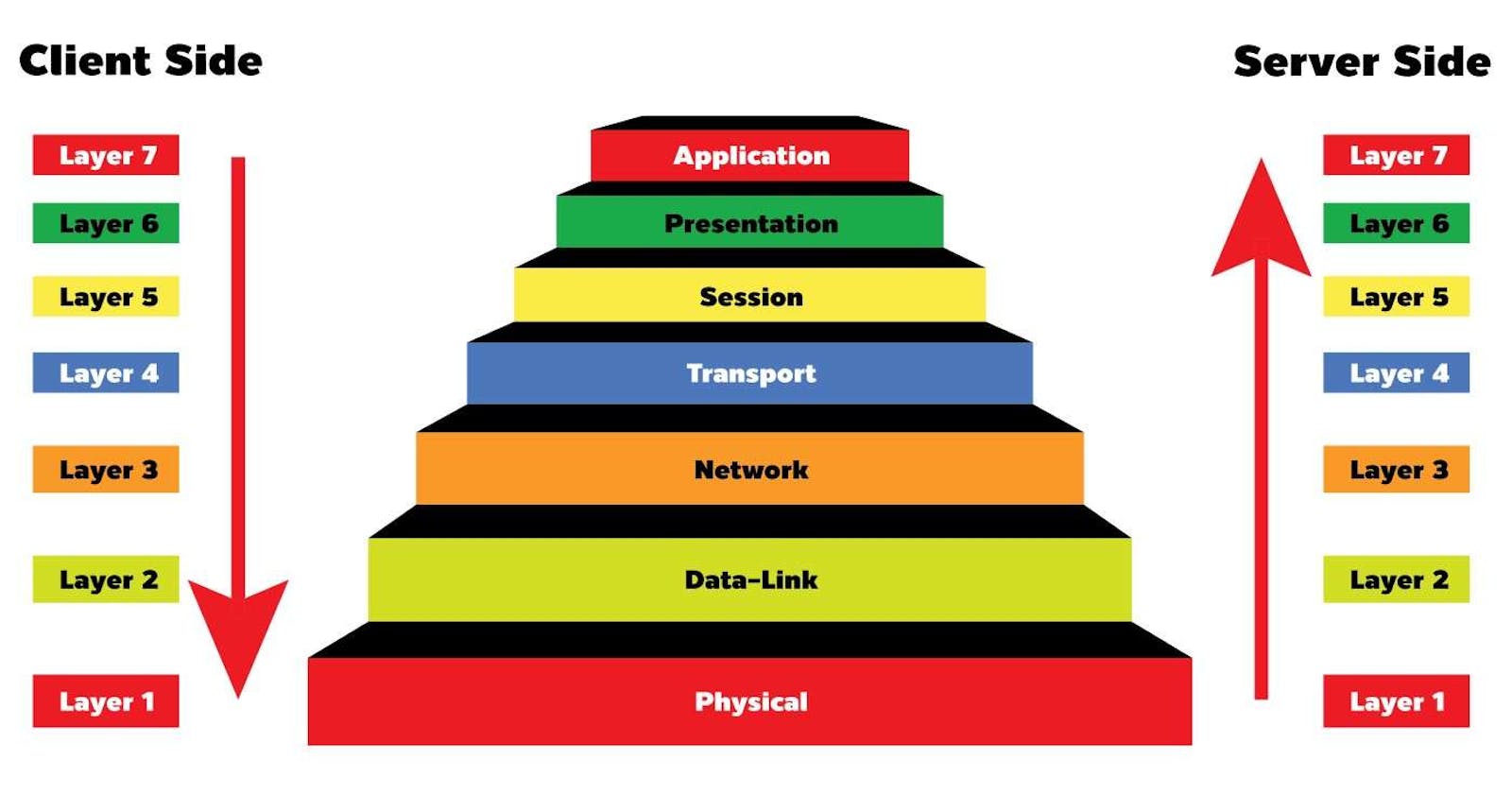In the vast landscape of digital communication, where emails zip across the globe in seconds and videos stream seamlessly to our screens, lies a complex system of interconnected layers, each playing a critical role in ensuring our online experiences are smooth and secure. These layers, known as the OSI (Open Systems Interconnection) model, provide a framework for understanding how data moves from one device to another across networks. In this blog, we will walk through journey of these layers, from the physical connections that underpin our digital infrastructure to the application layer that brings our favorite online services to life. Join us as we understand the networking layers and explore how they shape the way we connect and communicate in the digital age.
An OSI model consists of 7 layers which can be described as-
Layer 1: Physical Layer
The Physical Layer is the lowest layer of the OSI model. It deals with the physical connection between devices. This includes cables, connectors, network interface cards (NICs), and the transmission of raw data bits over a physical medium.
Layer 2: Data Link Layer
The Data Link Layer is responsible for node-to-node communication. It ensures that data is transmitted reliably across the physical layer. It also handles error detection and correction. It can also be called as frames which helps in assigning the mac addresses to your system.
Layer 3: Network Layer
The Network Layer is responsible for routing packets from the source to the destination across multiple networks. It determines the best path for data transmission and handles logical addressing.
Layer 4: Transport Layer
The Transport Layer ensures end-to-end communication between host devices. It establishes, maintains, and terminates connections, and also handles data segmentation, flow control, and error recovery.
Layer 5: Session Layer
The Session Layer manages communication sessions between applications. It establishes, maintains, and synchronizes the interactions between devices.
Layer 6: Presentation Layer
The Presentation Layer is responsible for data translation, encryption, and compression. It ensures that data exchanged between applications is in a format that the receiving application can understand.
Layer 7: Application Layer
The Application Layer is the highest layer of the OSI model. It provides an interface for user applications to access network services. This layer contains protocols that directly support user applications.
By understanding these networking layers, one can gain a better appreciation for how data is transmitted and managed across networks. These layers can be studied and applied upside down and vice versa as per the convenience based on client and server side.
Let's explore a real time scenario understanding all these layers into action, Consider the scenario of sending an email from one person to another using a web-based email service like Gmail:
The physical layer involves the physical transmission medium, such as Ethernet cables or Wi-Fi signals. In our example, the physical layer would be the cables and network infrastructure connecting your device to the internet. Your email application packages the email into frames. These frames contain MAC addresses (e.g., Ethernet addresses) for both the sender and the recipient. The data link layer ensures these frames are transmitted reliably over the local network. Once the frames are transmitted over the local network, they need to be routed to the recipient's network. The network layer determines the best path for these frames to travel across the internet, using logical addressing (IP addresses). As the frames reach the recipient's network, they are received by their router. The transport layer ensures that these frames are reassembled into the original email message. It also handles any errors that may occur during transmission. The session layer manages the communication session between your device and the email server. It establishes and maintains this session, ensuring that data is exchanged in an organized and synchronized manner. The presentation layer handles any necessary data translation or encryption. In our example, it might encrypt the email message to ensure secure transmission over the internet. Finally, the application layer is where the email application (e.g., Gmail) resides. It provides the interface for the user to compose, send, and receive emails. When you hit the "send" button in Gmail, it initiates the process of packaging the email into frames and sending it across the network.
In conclusion, the OSI model provides a structured approach to understanding the complexities of networking. From the physical layer, where data begins its journey as electrical signals traversing cables, to the application layer, where it emerges as familiar services and applications, each layer plays a crucial role in ensuring the integrity, security, and efficiency of our digital communications.
By unraveling the intricacies of these networking layers, we gain a deeper appreciation for the technology that powers our interconnected world. Whether we're sending an email, streaming a video, or conducting business online, the underlying framework of the OSI model shapes our digital experiences in profound ways.
As we continue to innovate and advance in the realm of networking technology, it's essential to maintain an understanding of the fundamental principles that govern it. By doing so, we can navigate the ever-evolving landscape of digital communication with confidence and clarity.
So, the next time you send a message, make a video call, or browse the web, take a moment to consider the layers of technology working behind the scenes to make it all possible. For in the layers of networking lies the foundation of our interconnected world.
Feel free to add your suggestions and comments as well on this to spread your knowledge..
